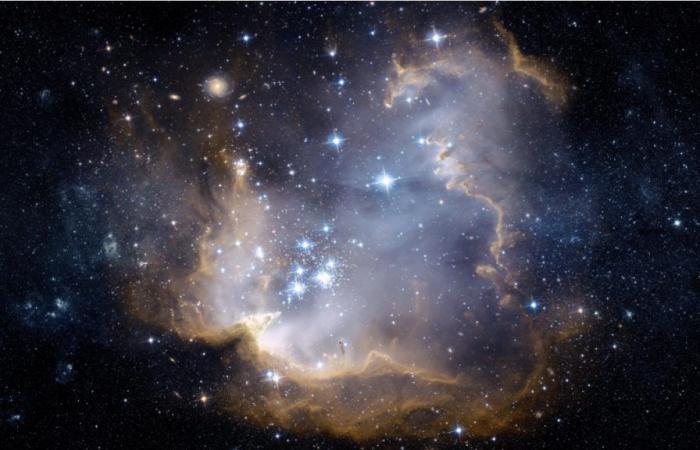Astronomers have spotted hundreds of strange, distant galaxies that appear to be forming unbelievably large numbers of stars or harboring inexplicably massive black holes.
Features that challenge our understanding of the cosmos
When the space telescope James-Webb began to peer into the early Universe, he identified hundreds of small galaxies, taking the form of tiny red dots, whose existence and characteristics seemed to challenge our understanding of the cosmos. Although it was quickly proposed that their extreme luminosity came from stars or supermassive black holes in full feeding frenzy, none of these hypotheses agreed with our models.
In the first scenario, the overwhelming number of stars required would have meant that theUniverse today has a mass much greater than that estimated, while that of black holes suggested cosmic monsters far too large for their host galaxies. Assuming that these two mechanisms are at play, the omnipresence of these red dots remains difficult to explain. ” says Caitlin Casey of the University of Texas at Austin.
According to calculations by Fabio Pacucci of the Harvard-Smithsonian Center for Astrophysics and his colleagues, even if 1% of the brightness of these galaxies came from black holes, they would still be 10 to 100 times too massive, based on our observations of the nearby Universe. This suggests that these extreme objects were forming and growing much more extraordinarily quickly at the dawn of the cosmos.
« It’s the eternal chicken-or-egg question: Did the galaxy form first and then the black hole collapse into its center, or did this cosmic monster appear first and then the galaxy assemble around it? “, underlines the researcher and principal author of the study, pre-published on the server arXiv. « The extreme masses of these black holes provide the strongest evidence to date for this latter hypothesis.. »
A complex puzzle
To make matters worse, it turns out that these small, early galaxies have other strange features, including very old stars, and strangely low brightness in X-ray wavelengths.
« Our current models of galaxies and black holes don’t match, meaning we’re missing a fundamental element », Estimates Bingjie Wang, of Pennsylvania State University.
While some possibilities, such as that early black holes devoured matter at a much faster rate than their modern counterparts, may help ease some of the tension, more observations will be needed to put the pieces of this complex puzzle together.






